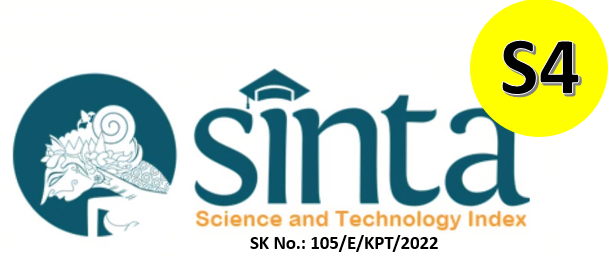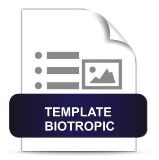Gambaran Kualitas Lingkungan Sungai Cimandiri Akibat Cemaran Merkuri di Wilayah Penambangan Emas Skala Kecil (PESK) Kabupaten Sukabumi
DOI:
https://doi.org/10.29080/biotropic.v7i1.1707Keywords:
Biota, Mercury, River Environmental Quality, WatershedAbstract
In Indonesia, ASGM has increased. This results in an increased risk of mercury pollution in the environment (Minamata Initial Assessment Report, 2019). The amalgamation process for ASGM in Sukabumi, it used mercury as basic material for amalgamation process. It can increase to negative impacts on the environment and humans. This study aims to describe the impact of mercury contamination on the environmental quality of the Cimandiri River around ASGM in Sukabumi District. This research was conducted using a laboratory test method with reference to PP No. 22 at 2021 and SNI 7387 at 2009. The results of the tests found that the highest mercury exposure occurred in aquatic biota (catfish, snakehead and eel) which exceeded the quality standard, although the media water and sediment does not exceed the quality standard. This indicates that the quality of the Cimandiri River is unsafe for biota due to mercury contamination in local biota around ASGM. Therefore, there is a need for further studies on the safety of local food products from the Cimandiri River.
Downloads
References
Astika, H., Handayani, S., Damayanti, R., Surono, W., Maryono, Suciyanti, M., & Octaviano, H. A. 2021. Characterization of potential mercury contamination in the ASGM area of Mandailing Natal, North Sumatera. IOP Conference Series: Earth and Environmental Science, 882(1). https://doi.org/10.1088/1755-1315/882/1/012062
Canadian Council of Ministers of the Environment. 1999. Canadian Sediment Quality Guidelines for the Protection of Aquatic Life PROTOCOL Protocol for the Derivation of Canadian Sediment Quality Guidelines for the Protection of Aquatic Life Canadian Council of Ministers of the Environment 1995 Résumé Acknowledg.
Cao, L., Liu, J., Dou, S., & Huang, W. 2020. Biomagnification of methylmercury in a marine food web in Laizhou Bay (North China) and associated potential risks to public health. Marine Pollution Bulletin, 150(November), 110762. https://doi.org/10.1016/j.marpolbul.2019.110762
Getriana, A., Achmadi, U. F., & Leometa, C. H. 2018. Behavioral mercury exposure of people in artisanal and small-scale gold mining site area at lebaksitu village, 2017. Indian Journal of Public Health Research and Development, 9(6), 433–438. https://doi.org/10.5958/0976-5506.2018.00593.4
KemenLHK. 2020. Pertambangan Emas Skala Kecil (PESK). http://sib3pop.menlhk.go.id/index.php/articles/view?slug=pertambangan-emas-skala-kecil-pesk-tantangan-dalam-akses-pembiayaan
KemenLHK. 2021. 5 ayat 12). 085459.
Kementerian Kesehatan RI. 1990. Peraturan Menteri Kesehatan No . 416 Tahun 1990 Tentang : Syarat-syarat Dan Pengawasan Kualitas Air. 416.
Kementeriann Lingkungan Hidup dan Kehutanan. 2020. Status Merkuri pada Pertambangan Emas Skala Kecil di Indonesia. In Status Merkuri pada Pertambangan Emas Skala Kecil di Indonesia.
Kolarova, N., & Napiórkowski, P. 2021. assessment and toxicity effect for the aquatic biota. Ecohydrology & Hydrobiology, xxxx. https://doi.org/10.1016/j.ecohyd.2021.02.002
Minamata Initial Assessment Report. 2019. Minamata Initial Assessment Report 2019.
Moiseenko, T. I. 2019. Bioavailability and Ecotoxicity of Metals in Aquatic Systems: Critical Contamination Levels. Geochemistry International, 57(7), 737–750. https://doi.org/10.1134/S0016702919070085
Ovadje, L., Calys-Tagoe, B. N., Clarke, E., & Basu, N. 2021. Registration status, mercury exposure biomarkers, and neuropsychological assessment of artisanal and small-scale gold miners (ASGM) from the Western Region of Ghana. Environmental Research, 201(April), 111639. https://doi.org/10.1016/j.envres.2021.111639
Rai, P. K., Lee, J., Brown, R. J. C., & Kim, K.-H. 2021. Environmental fate, ecotoxicity biomarkers, and potential health effects of micro- and nano-scale plastic contamination. Journal of Hazardous Materials, 403, 123910. https://doi.org/https://doi.org/10.1016/j.jhazmat.2020.123910
Selin, N. E. 2009. Global biogeochemical cycling of mercury: A review. Annual Review of Environment and Resources, 34, 43–63. https://doi.org/10.1146/annurev.environ.051308.084314
Uddin, M. M., Zakeel, M. C. M., Zavahir, J. S., Marikar, F. M. M. T., & Jahan, I. 2021. Heavy metal accumulation in rice and aquatic plants used as human food: A general review. Toxics, 9(12). https://doi.org/10.3390/toxics9120360
UU No.11 Tahun 2017. 2017. Pengesahan Minamata Convention On Mercury. UU No 11 Tahun 2017 Tentang Pengesahan Minamata Convention Mercury, 2. https://jdih.setkab.go.id/puu/buka_puu/175316/UU Nomor 11 Tahun 2017.pdf
Zhang, L., & Wong, M. H. 2007. Environmental mercury contamination in China: Sources and impacts. Environment International, 33(1), 108–121. https://doi.org/10.1016/j.envint.2006.06.022
Downloads
Published
How to Cite
Issue
Section
License
Copyright (c) 2023 Izza Hananingtyas

This work is licensed under a Creative Commons Attribution-NonCommercial-ShareAlike 4.0 International License.













